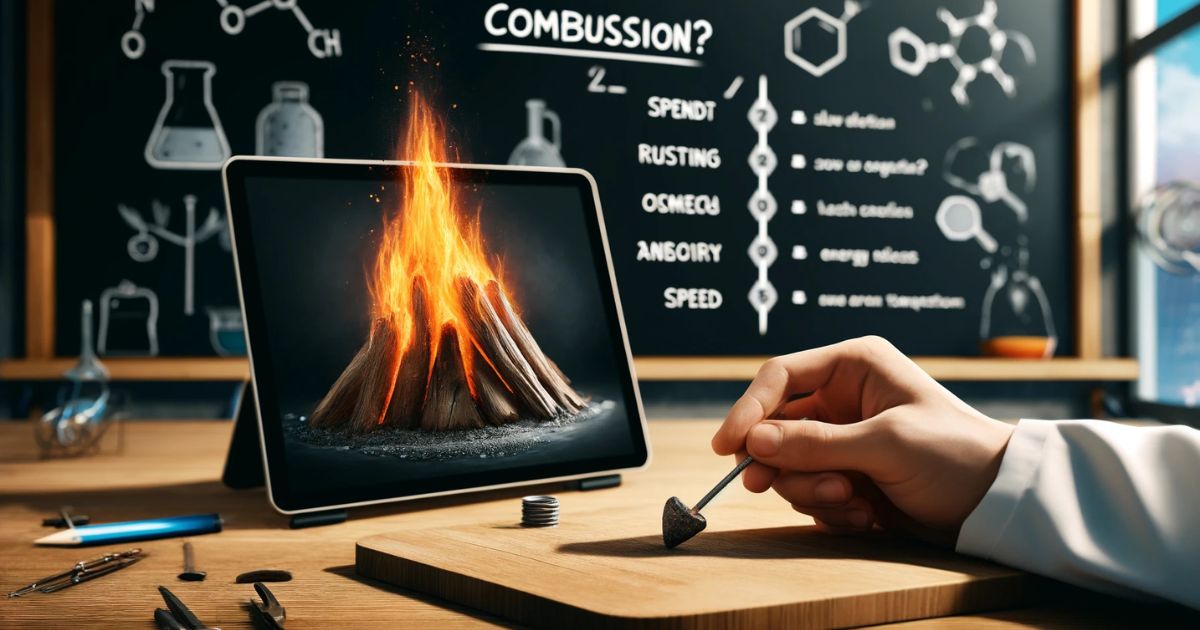The process of rusting and combustion are both oxidation reactions involving the interaction of substances with oxygen. However, they differ significantly in their mechanisms, energy changes, and observable characteristics. This discussion aims to explore whether rusting can be classified as a form of combustion by examining their definitions, processes, and key differences.
Understanding Rusting
Rusting is a chemical process wherein iron reacts with oxygen and moisture from the environment, leading to the formation of iron oxides, commonly known as rust. This reaction is a type of corrosion that gradually deteriorates iron and its alloys.
Chemical Reaction:
The simplified chemical equation for rusting is:
4Fe + 3O₂ + 6H₂O → 4Fe(OH)₃
Over time, iron(III) hydroxide (Fe(OH)₃) dehydrates to form iron(III) oxide-hydroxide (FeO(OH)), which is the reddish-brown substance commonly seen as rust.
Characteristics of Rusting:
- Slow Process: Rusting occurs gradually over an extended period.
- Requires Moisture: The presence of water or moisture is essential for rusting to take place.
- No Flame or Light: The process does not produce flames or visible light.
- Low Energy Release: Rusting is an exothermic reaction but releases energy so slowly that it is not noticeable.
Understanding Combustion
Combustion is a chemical process in which a substance reacts rapidly with oxygen, releasing energy in the form of heat and light. It is commonly associated with burning and is utilized in various applications, from engines to heating systems.
Chemical Reaction:
A general combustion reaction can be represented as:
Fuel + O₂ → Oxidized Products + Heat + Light
Characteristics of Combustion:
- Rapid Reaction: Combustion occurs quickly and can be explosive.
- Produces Flame and Light: The reaction emits visible light and heat.
- High Energy Release: Significant amounts of energy are released in a short time.
- Requires Ignition Temperature: A certain temperature threshold must be reached for combustion to initiate.
Comparing Rusting and Combustion
While both rusting and combustion are oxidation reactions involving oxygen, their similarities largely end there. The following table highlights the key differences:
Is Rusting a Form of Combustion?
Given the stark differences in reaction rates, energy release, and observable characteristics, rusting cannot be classified as a form of combustion. Combustion is characterized by rapid oxidation accompanied by significant energy release in the form of heat and light, often resulting in flames. In contrast, rusting is a slow, gradual process that does not produce noticeable heat or light and requires the presence of moisture.
While both processes involve oxidation, the term “combustion” is reserved for reactions that meet specific criteria, including rapid energy release and the production of heat and light. Therefore, rusting does not fit the definition of combustion.
Conclusion
In conclusion, rusting and combustion are distinct chemical processes that, despite both involving oxidation, differ significantly in their mechanisms, energy dynamics, and observable effects. Rusting is a slow, moisture-dependent process leading to the deterioration of iron, while combustion is a rapid, energy-releasing reaction that produces heat and light. Consequently, rusting cannot be considered a form of combustion.
—










